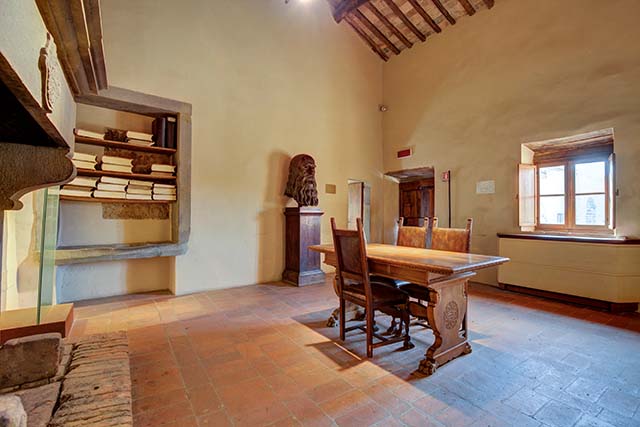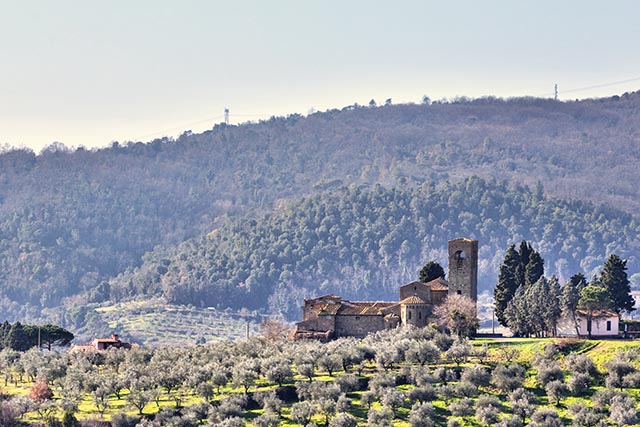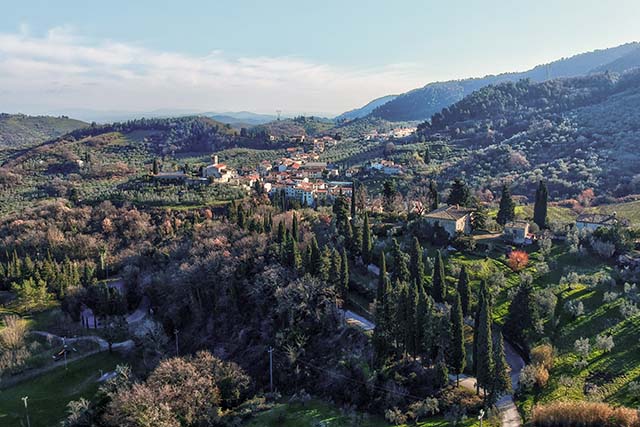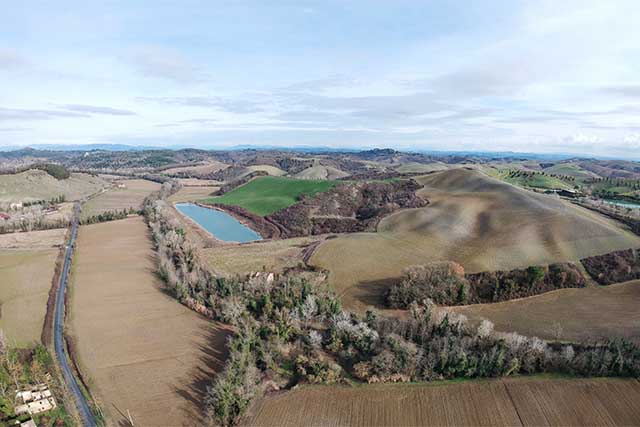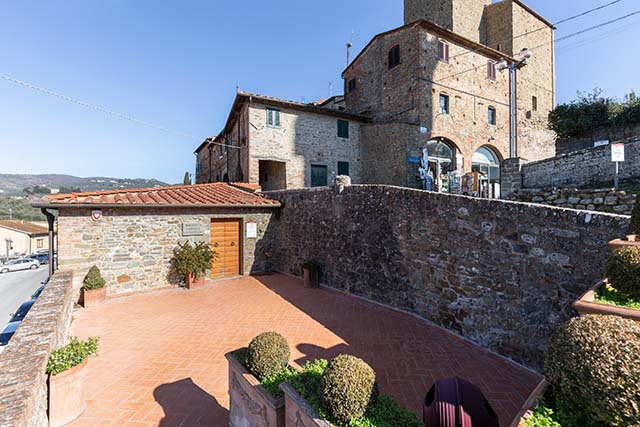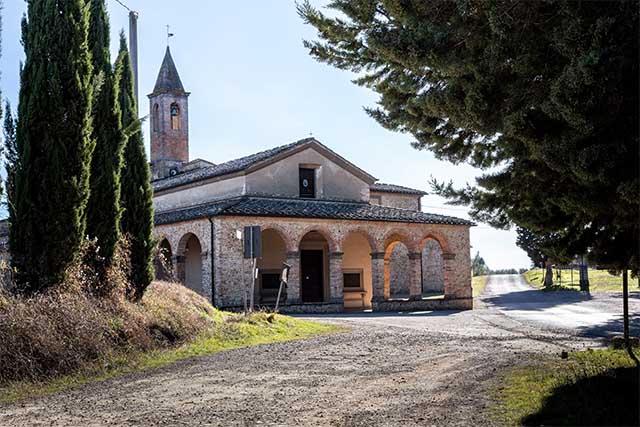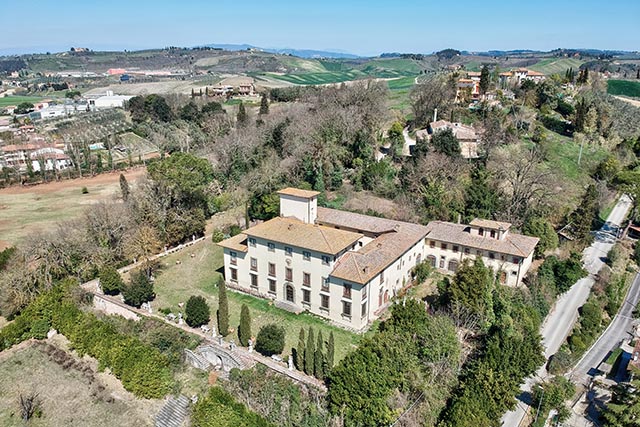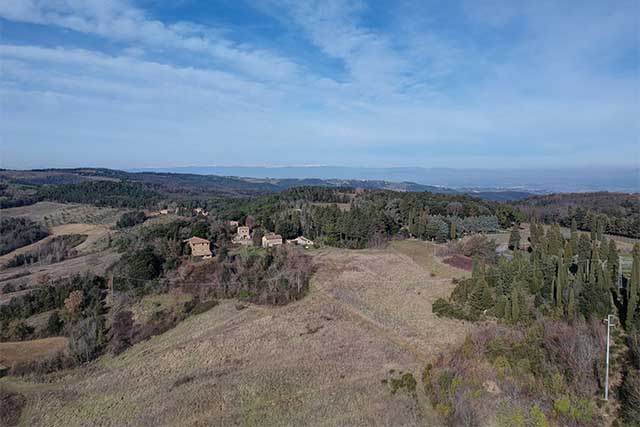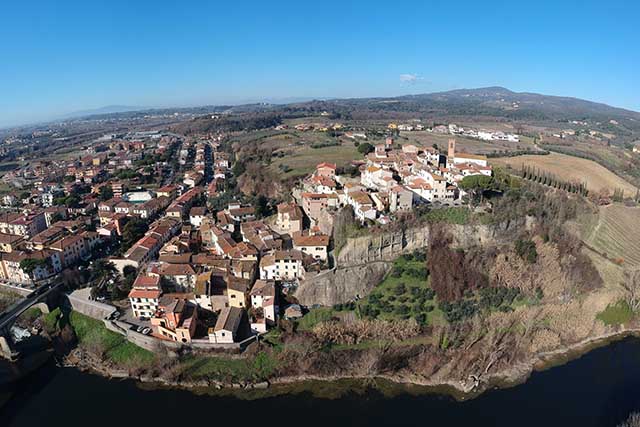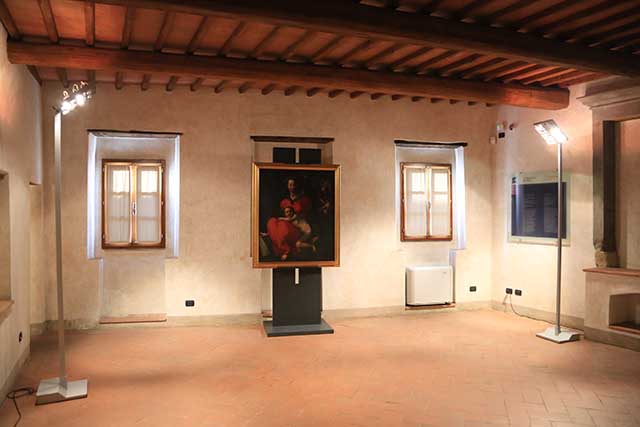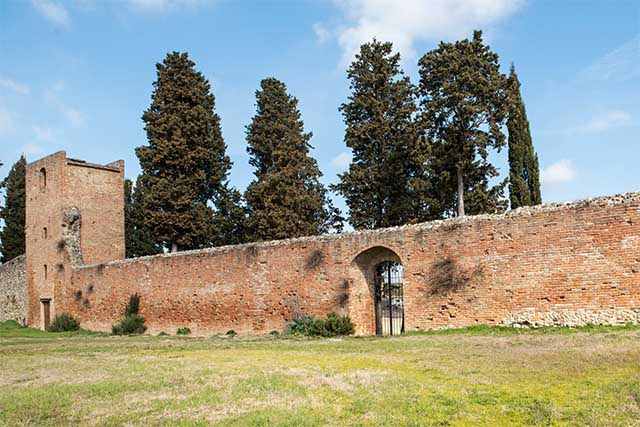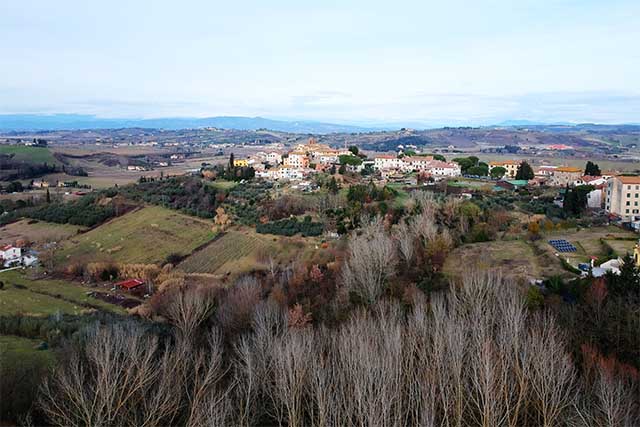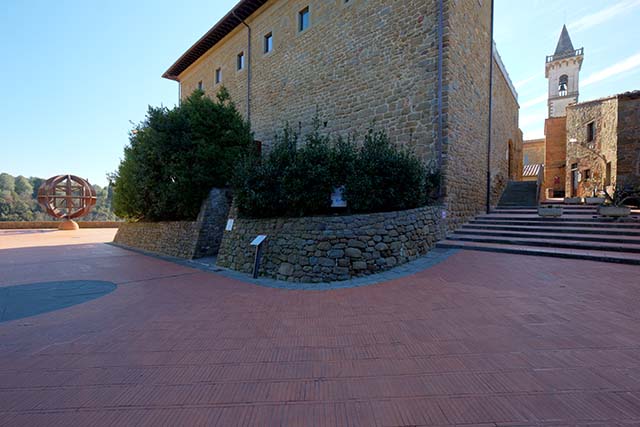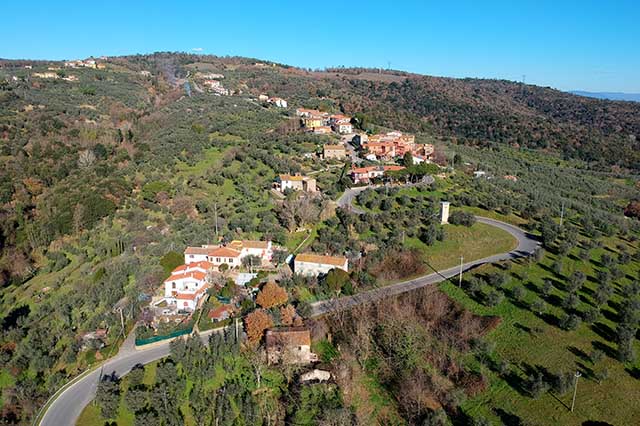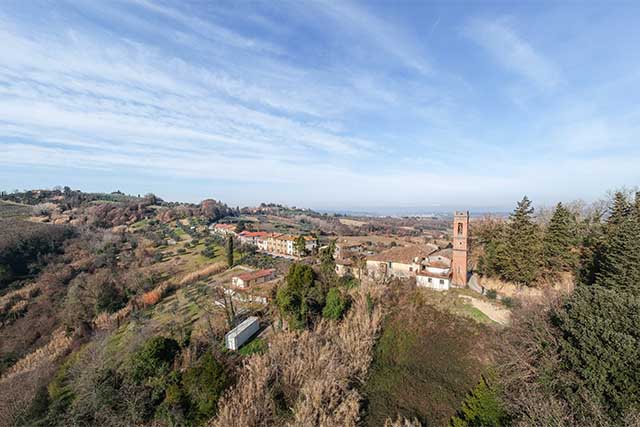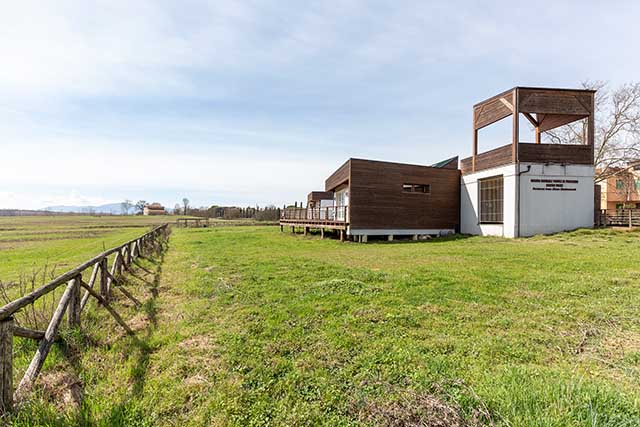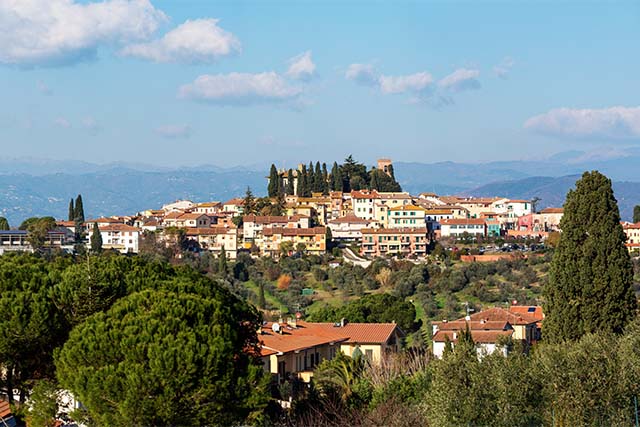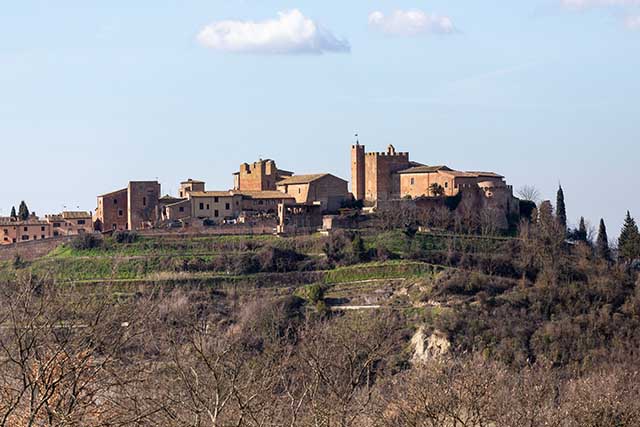Places in the Empolese Valdelsa
Filter/Filtra
The house at Anchiano entered into the patrimony of the da Vinci family around 1480, and perhaps Ser Piero, Leonardo's father, was thinking of making it into a resting place along the road rising from Vinci up to the passes of Montalbano. After Ser Piero's death, the complex was still composed of “una casa da oste principiata” (an innkeeper’s house, just begun). Successively, the branch of the family of Gugliemo da Vinci, one of Leonardo's half-brothers, took root in Anchiano. The series of studies during the last century on the theme of Leonardo’s birth gave rise to the extraordinary 'place of memory' that today is the Casa Natale di Leonardo (Leonardo’s birth house) in Anchiano, enriched by technological solutions allowing you as a visitor to immerse yourself, together with Leonardo, in his life story.
The Archeological Park of Carmignano includes various Etruscan sites of interest, as well as the Museo Archeologico Comunale ‘Francesco Nicosia’ in Artimino, which has gathered together many artefacts from the town’s Etruscan past. A fine collection of pottery is on display in a separate section of the museum in the nearby village of Bacchereto. The family of Leonardo’s paternal grandfather owned a kiln in this village and it is thought that Leonardo may have received his first informal lessons in art there.
Leonardo's paternal grandmother, Lucia, was originally from Bacchereto, the production center for the glazed pottery that was in full bloom during Leonardo’s time. An ancestor of grandmother Lucia’s family was one of the first pottery vendors of Bacchereto: Leonardo could certainly add to the many experiences of his youthful period in these places also the practice, in Bacchereto, of clay modeling and knowledge of furnaces and enamel colors, which he even mentions in his papers. In Bacchereto there are still "Vincian" localities such as Toia, where his grandmother's family had a house and a pottery kiln.
Today there are still some remains of stone walling from the castle of Barbialla within the estate of the villa built in the early 20th century. The castle was originally one of those belonging to the noble Gherardeschi family, in the northernmost area of their ancient possessions in the Val d’Egola. In the 16th century, when Leonardo drew Barbialla, still in the form of a turreted castle surrounded by walls, the small Val d'Egola town counted a population of a few hundred.
The Biblioteca Leonardiana is today one of the leading institutions for Leonardo da Vinci specialists and enthusiasts, as well as leading promoter of sector studies and scientific dissemination, such as with the conference cycle of the Letture Vinciane. The library is situated at the upper part of Vinci, the castle, conserving more than 13,000 items in its collections, including works about Leonardo and by Leonardo himself. The library offers an extraordinary instrument for learning about the Leonardo manuscripts, referred to as e-Leo, a database making it possible to consult the complete works of Leonardo in high-resolution digital format, enhanced also by specially designed research apparatus.
Tommaso Vinci, a descendant of Leonardo's family who owned the family’s private archive at the time, lived in this small hamlet in the hills between Montelupo and Montespertoli in 1869. The precious archival collection remained for centuries in the Orbignano family branch until, at the end of the 18th century, with the extinction of that male line, it passed by female line to the Corsi family of the community of Santa Lucia a Paterno, still near Vinci. The da Vinci family archive reappeared at the end of the 19th century at Botinaccio, where it was acquired by great Leonardo da Vinci scholar Gustavo Uzielli.
The small turreted village, drawn by Leonardo with the indication of Camiano for the name, must be identified as the ancient castle that must have occupied the upper slopes of the hillsides that today are the site of the Villa Pucci in the hamlet of Cambiano, in the municipality of Castelfiorentino. The castle of the Valdelsa, originally belonging to the Counts Cadolingi of Fucecchio, maintained the appearance that it took on in the Late Middle Ages, up until the age of Leonardo. Today nothing remains of the castle other than the church of San Prospero, visible, even if in its later forms, in the garden of the Villa Pucci. Originally it must have had a plan with three naves and a porch on the facade.
Today Camporbiano is a small town located along the main road from San Gimignano to Certaldo, but during the central centuries of the Middle Ages, in this place stood one of the castles of the Cadolingi, the Counts of Fucecchio. Today there is no trace of that first castle; nevertheless Leonardo depicted Camporbiano in the form it still must have had during the Late Middle Ages. At that time, in fact, the ancient Cadolingian castle had probably become a fortress-shelter, used as a refuge for the rural population during periods of danger. The area, in fact, situated astride the important north-south route, was disputed by several forces on the field, including, mainly, the cities of San Gimignano and Volterra.
Capraia appears frequently in Leonardo's papers. Leonardo depicts it properly, in the form of a well-fortified castle, strategically situated on a spur overlooking a bend of the Arno, shortly after the gorge La Gonfolina. The ancient castle of the Counts Alberti had been one of the most contested strong points of the Valdarno, not only for its position in control of the river, but also for its placement on the border of territories divided among potentates and cities. The rock formations that Leonardo observed along the course of the Arno near Capraia are accurately described and explained in several passages of the Codex Leicester.
In this building of the ancient village lived Jacopo Carucci, called Pontormo, the undisputed protagonist of Florentine mannerism. It has become one of the Houses of Memory and a research center dedicated to the work of the highly original artist. On the occasion of the Leonardian Year 2019, the exhibition “Leonardo and Pontormo” is being presented, dedicated to the aspects that united these two extraordinary artists, teacher and pupil, both natives of this land. A video installation involves the public in the narration of the lesser-known aspects of the tormented biographical story of Pontormo.
The ancient castle of the Counts Alberti appears on Leonardo’s famous map of the Valdelsa RL 12278 (Windsor Castle collection). During his time, the large fortified village appeared still in the form it had reached during the 14th century, at the point of its maximum expansion. A noteworthy portion remaining from the walls with their wall towers as depicted by Leonardo is preserved and visible today on the upper part of Castelforentino. From the populous Valdarno village originated the illuminator Vante of the Attavanti, whom Leonardo had probably met during the years while they were both attending Verrocchio’s workshop.
The village of Castelnuovo preserves the structure of the late medieval castle that was strategically located on the border of the Elsa, and that passed under control of Florence only after, at the end of the 14th century, the city’s defensive structures had been compromised. The castle, divided into an upper part, at higher elevation, and an underlying village, was surrounded by walls punctuated by wall towers, probably built in brick. This is the aspect with which Leonardo represented the small town of the Valdelsa, proposed by the artist in the form of a small turreted castle.
The castle of Vinci is one of the best preserved of the Guidi fortresses in the Lower Valdarno. The history of its origins coincides with that of the powerful noble family, rooted in partibus Greti since the end of the 11th century. Leonardo, who was certainly baptized in the church of Santa Croce, was raised by his father's family, who lived in the village of the castle. The houses of the da Vinci family have been identified in the building at the corner between the current Via Roma and Piazzetta Guazzesi. Today the castle houses the spaces of the Museo Leonardiano and a rich series of 'Vincian places', through which we can retrace some of the moments of his life, and the appeals of the suggestiveness of some of his works.
Among the castles of eastern Montalbano drawn by Leonardo figures also the small town of Castra. Leonardo must have seen it still in the form of the fortified shelter that was called, in written sources from the 13th century, Castrum Castri Vallis Arni, or the "Castra castle of the Valle dell'Arno," while the nearby village of Conio was still defined as an open village (villa). During Leonardo’s time, the inhabitants of the small town of Castra, who could take advantage of the forests of Montalbano, replenished wood supplies for the activities of the ferrymen of Castellina and of Limite sull'Arno.
Catignano was originally one of the Valdelsan castles of the family of the counts of Fucecchio. Already, by the end of the 13th century, it had entered to become part of the Florentine countryside, but its position, along one of the routes of the Via Francigena, on the left of the Elsa, left it exposed to military raids. Its function as a shelter for the population of the sparse settlement during the Late Middle Ages must have ensured the maintenance of its fortified structures, if Leonardo, even in the 16th century, drew Catignano as a small castle equipped with defenses.
The center, based in Castelmartini (PT), deals with the research, protection, and promotion of the wetlands of the Fucecchio marsh. Leonardo knew this environment well, which he seems to have depicted in his famous 1473 Paesaggio (Landscape). The still body of water at the center of the drawing appears to be navigated by two forms of watercraft with curved bows, very similar to the marsh navicelli (small ships), which until last century transported men and goods from one end of the Fucecchio Marsh to the other. The center also organizes visits to the naturalistic area of Arnovecchio, the habitat developed in the particular place where one of the deep meanders of the river, depicted by Leonardo just before its rectification, once passed.
The aspect that the ancient Guidi castle must have had at the time of Leonardo was that of the ring of the new 14th-century walls required by Florence. As can be read in the Florentine provision of 1336, the new circuit of walls, which were also intended to enclose the ring-shaped village built that the foot of the castle, were to have been fortified with eight towers about 15 meters high, at least six meters above the line of merlons. These would be the same eight towers we can count on the circular walls of the castle of Cerreto, drawn by Leonardo in the famous bird's eye view map from the Windsor Castle collection. Today those towers no longer stand.
Certaldo was originally one of the Valdelsan castles of the Counts Alberti, but it soon entered into the orbit of Florence. Outside the oldest nucleus occupying the highest part of the hill, the buildings of the village, fortified by a surrounding wall circuit during the early 14th century, had progressively clustered, in the direction of the road toward the Elsa Valley. In map RL 12278 of the Windsor Castle collection, Leonardo represents Certaldo in the forms reached at that time, including its unmistakable turreted profile. Leonardo had certainly met Lattanzio Tedaldi in Florence, at the beginning of the 16th century, the vicar of Certaldo during the second half of 1503. On that occasion, Tedaldi commissioned the cenotaph in Boccaccio’s memory from sculptor Giovanfrancesco Rustici, friend and companion to Leonardo.




